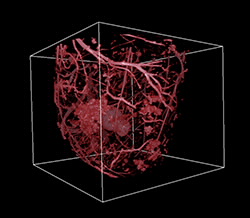 |
| Study of type-2 diabetes. |
Innovation Minister Senator Kim Carr today opened a new $25 million Imaging and Medical Beamline (IMBL) which will enable live imaging at incredibly high-resolution inside the human body and facilitate exciting new research, diagnostics and treatments.
The IMBL is part of the Australian Synchrotron, a machine the size of a football field that accelerates electrons to close to the speed of light creating very bright light that is used for research, including imaging.
Senator Kim Carr said the new line was the world’s widest synchrotron X-ray beam and would lead directly to advances in medical diagnosis and treatment.
“This investment in cutting-edge research will pay dividends in a range of areas – most notably in human health. The beam precedes the development of a patient care program, expected in 2016,” Senator Kim Carr said.
“In a first for Australia, using the IMBL, scientists will be able to take a live, three dimensional image of a breathing person in unprecedented detail, as well as track the movement of cells through tissues in real time. This has direct clinical applications.”
It is also envisaged the new line will enable clinicians to develop new treatments, including a new form of radiation therapy that will target tumour cells while sparing healthy tissue.
The Government recently announced a $36.8 million development at the Australian Synchrotron which would mean the line could be used around the clock by scientists. The five buildings constructed with this investment include the National Centre for Synchrotron Science, user accommodation, and technical support laboratories.
 |
| Study of the effects of intermittent hypoxia and sleep apnea on lung vascular function and structure. |
The Labor Government has provided more than $15 million in funding for the IMBL, including through the National Health and Medical Research Council, with additional contributions from the Synchrotron’s 10 foundation partners and the Victorian State Government.
The Australian Nuclear Science and Technology Organisation (ANSTO) has managed the Australian Synchrotron since January this year, building on research links between the organisations, particularly in the complementary areas of neutron scattering and accelerator science.
The two photos above are courtesy of James Pearson (IMBL and Monash Biomedical Imaging), Daryl Schwenke (University of Otago), Mikiyasu Shirai (National Cerebral and Cardiovascular Centre, Japan) and Alberto Astolfo (IMBL).
More information about the Australian Synchrotron is at www.synchrotron.org.au


